McDonald’s vs. Burger King
The Ultimate Fast-Food Rivalry
The battle between McDonald’s and Burger King is one of the fiercest rivalries in business history. Spanning over seven decades, these two fast-food giants have engaged in aggressive marketing tactics, legal disputes, and product innovations in their bid for dominance. Their competition has led to some of the most memorable advertising campaigns, clever digs at one another, and a global fast-food landscape shaped by their ongoing feud.
The “Burger Wars”, are an entertaining spectacle if nothing else, but they are offer academic “food for thought” too. Pun intended. Philip Kotler’s principles of competitive positioning highlight how brands differentiate through product, price, place, and promotion – elements both companies have leveraged to gain an edge over the other.
The Marketing Made Clear Podcast
Check out the Marketing Made Clear podcast on all good streaming platforms.
1950s: The Birth of Two Giants
During the 1950s, the fast-food industry was in its infancy, and McDonald’s and Burger King were establishing their foundational business models. McDonald’s focused on efficiency and systematisation, while Burger King aimed for a unique broiling technique to differentiate its products. According to Levitt’s (1960) concept of the “Marketing Myopia,” these early strategies were critical in defining their long-term success.
-
1940: McDonald’s was founded by Richard and Maurice McDonald in San Bernardino, California. The brothers introduced the “Speedee Service System,” revolutionising fast food by focusing on efficiency, standardisation, and affordability.
-
1953: The first Burger King (originally called Insta-Burger King) opened in Jacksonville, Florida. The company relied on the “Insta-Broiler” to cook burgers quickly and evenly.
-
1954: James McLamore and David R. Edgerton purchased the struggling Insta-Burger King and renamed it Burger King, reworking its franchise model and setting it up for national expansion.
1960s: Expansion and Defining Signatures
The 1960s marked the expansion of both brands as they began differentiating themselves through signature products and branding. McDonald’s focused on the efficiency of its franchise model, perfecting the assembly-line approach to food preparation, which allowed it to rapidly scale across the United States. Burger King, on the other hand, sought to position itself as a premium alternative to McDonald’s, offering a larger, flame-grilled burger that stood in contrast to McDonald’s griddled patties.
Enter the Clown – The Rise and Fall of Ronald McDonald
Ronald McDonald was created in the early 1960s to attract families to the fast-food chain. In 1963, McDonald’s franchisee Oscar Goldstein, operating in the Washington, D.C., area, sought to capitalise on the popularity of children’s television programming. He hired local radio personality Willard Scott, who had portrayed Bozo the Clown on WRC-TV from 1959 to 1962, to develop a new character for the brand. Scott introduced “Ronald McDonald, the Hamburger-Happy Clown” in three television commercials that aired locally in 1963. In these early appearances, Ronald wore a costume featuring a nose made from a McDonald’s cup and a hat that was a tray holding a Styrofoam burger, fries, and a milkshake.
Recognising the character’s potential, McDonald’s executives decided to promote Ronald McDonald nationally. In 1965, Ronald made his first national television appearance during the Macy’s Thanksgiving Day Parade. To refine his image, McDonald’s hired circus performer Michael Polakovs, known as Coco the Clown, in 1966. Polakovs redesigned Ronald’s costume and makeup, creating the familiar look of a yellow jumpsuit, red-and-white striped shirt, and bright red wig.
Over the years, Ronald McDonald became a central figure in McDonald’s marketing, especially targeting children. However, in the early 2000s, amid growing concerns about childhood obesity and changing marketing strategies, the prominence of Ronald McDonald in advertising began to decline. The character was gradually phased out as McDonald’s shifted its focus away from child-directed marketing.
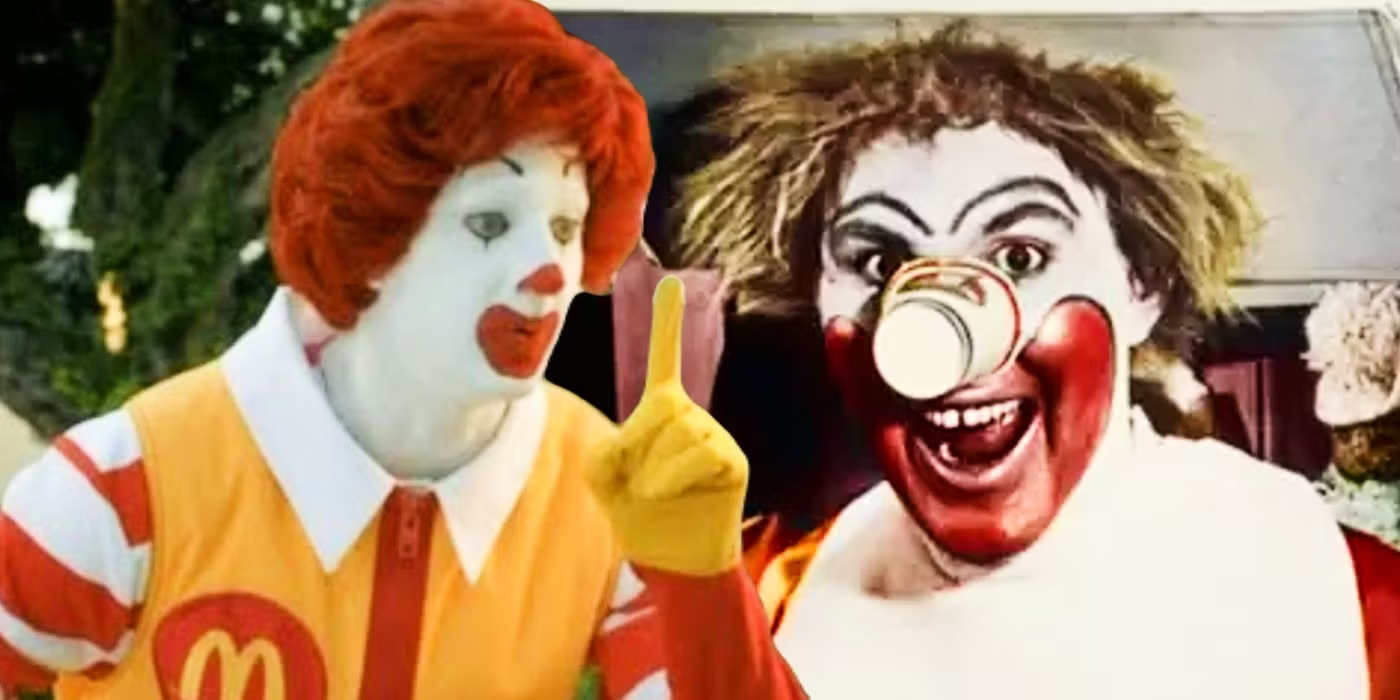
The introduction of iconic burgers such as the Whopper and Big Mac played a crucial role in their brand positioning, each becoming synonymous with its respective brand. McDonald’s leveraged its increasing presence to establish itself as the go-to fast-food option for families, emphasising convenience and affordability. Meanwhile, Burger King adopted an edgier approach, focusing on bold flavours and a more customisable menu. Ries and Trout’s (1981) “Positioning: The Battle for Your Mind” explains how brands establish distinct identities through unique product offerings, a principle that became evident in the strategic differentiation employed by these two competitors during this era.
-
1967: Burger King introduced the Whopper, positioning it as a premium burger compared to McDonald’s simpler offerings.
-
1968: McDonald’s responded by launching the Big Mac, which would go on to become one of the most recognisable burgers in the world.
-
Advertising Focus: While McDonald’s focused on brand-building and Ronald McDonald, Burger King leaned into the idea of giving customers more choice, setting the stage for a decades-long rivalry.
1970s: The Burger Wars Begin
The 1970s saw the rise of comparative advertising as Burger King started targeting McDonald’s directly in its marketing, marking the beginning of what would later be referred to as the “Burger Wars.” This period saw a shift from simple brand awareness campaigns to aggressive, direct attacks on competitors – a tactic explored in Ries and Trout’s (1981) “Positioning: The Battle for Your Mind.”
Burger King sought to carve out a unique identity by contrasting its flame-grilled Whopper against McDonald’s signature menu, setting the stage for a decade of marketing “one-upmanship”. This period aligns with the notion of competitive advantage discussed by Porter (1985), where firms use differentiation and direct competition to outperform rivals, leveraging bold advertising to sway customer perception and brand loyalty.
Beyond the academic theories, this era also produced some of the most memorable fast-food marketing moments. The rivalry wasn’t just played out in boardrooms but in the everyday lives of customers. People would debate fiercely over whether a Big Mac or a Whopper was the superior burger, and advertisements only fuelled these arguments.
Some local Burger King franchises even went so far as to offer free Whoppers to customers who brought in their McDonald’s receipts, an early example of guerrilla marketing that got people talking. Meanwhile, McDonald’s remained steadfast, focusing on building its brand trust rather than engaging in direct confrontation. These tactics made the 1970s a golden era for fast-food advertising, creating an emotional connection with customers that would last for decades.
- 1974: Burger King launched the iconic “Have It Your Way” campaign, promoting customisation in contrast to McDonald’s standardised menu.
- 1977: Burger King hired Donald N. Smith, a former McDonald’s executive, to improve its franchise model, leading to “Operation Phoenix,” which included menu expansions and operational changes.
- Competitive Advertising: Burger King took direct jabs at McDonald’s in its ads, particularly mocking the size of its burgers compared to the Whopper.
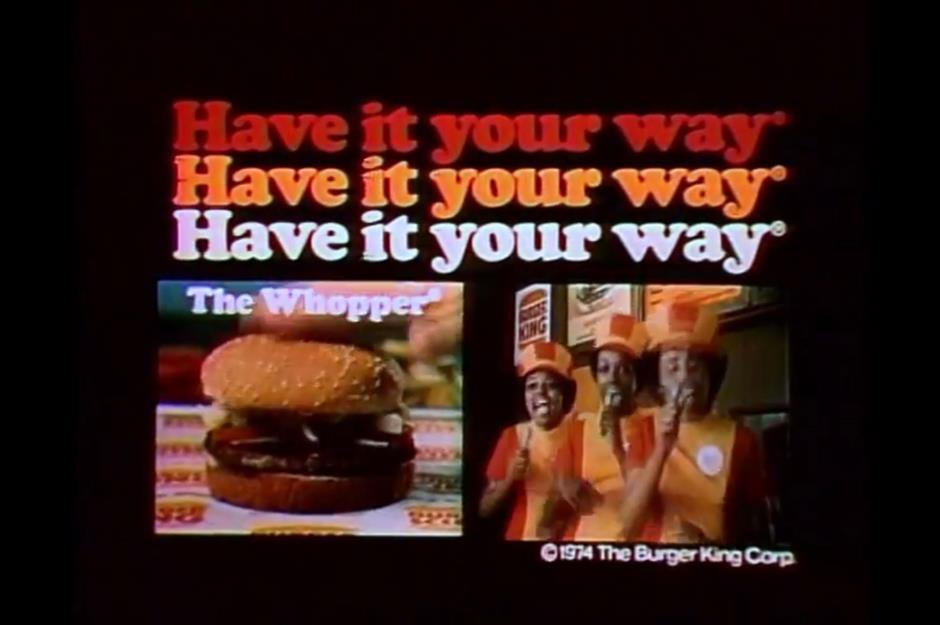
1980s: Aggressive Marketing and Legal Battles
The 1980s marked the height of aggressive marketing and even legal disputes between the two brands.
This era saw an explosion of direct comparative advertising, where each brand attempted to undermine the other’s credibility and appeal. Burger King intensified its efforts to position itself as the superior option through campaigns directly calling out McDonald’s menu items, most notably through blind taste tests and claims of bigger, flame-grilled burgers. Meanwhile, McDonald’s responded by reinforcing its position as the industry leader through mass expansion and global brand consistency.
This period also saw legal disputes, including a lawsuit filed by McDonald’s against Burger King over alleged false advertising regarding burger sizes. The era was defined by the application of Kotler’s marketing warfare strategies, where firms openly attack competitors to establish market dominance. The principles of guerrilla marketing, as defined by Levinson (1984), were also evident in the creative and unconventional tactics employed by both brands to capture consumer attention and market share.
Although it is clear that McDonalds hold the dominant position – Burger King are developing their personality as a “cheeky challengers” as their strategy.
- 1982: Burger King released a series of ads directly comparing its burgers to McDonald’s – including the “Aren’t You Hungry” advertisement series – claiming they were larger and better tasting. McDonald’s responded with a lawsuit, accusing Burger King of false advertising. The case was settled out of court.
- 1984: Wendy’s entered the fray with the legendary “Where’s the Beef?” campaign, indirectly criticising both McDonald’s and Burger King for their burger sizes.
- 1985: Burger King launched its “Battle of the Burgers” campaign, directly challenging McDonald’s with taste tests.
- McDonald’s Response: McDonald’s largely refrained from direct attacks, instead focusing on expanding globally and promoting its Happy Meals.
1990s: Menu Wars and Parody Campaigns
The 1990s saw both brands doubling down on menu innovation and advertising strategies that directly attacked each other, intensifying their long-standing rivalry. Burger King leveraged aggressive comparative advertising, directly mocking McDonald’s flagship products through television commercials and print campaigns. One of its most notable efforts was the “Big King” launch, a direct competitor to the Big Mac, emphasising the Whopper’s flame-grilled superiority.
Meanwhile, McDonald’s focused on reinforcing its brand dominance through superior franchising and rapid global expansion, ensuring its Golden Arches remained synonymous with fast food worldwide.
This period also saw the rise of character-driven marketing. McDonald’s continued its dominance with Happy Meals, featuring an ever-changing lineup of toys tied to blockbuster films like “The Lion King” and “Toy Story,” cementing its appeal to children and families. Burger King countered with its own kid-friendly offerings, including partnerships with Nickelodeon and the “Burger King Kids Club,” an attempt to cultivate brand loyalty among younger audiences.
The Burger King Kids Club – Segmentation at Play
The Burger King Kids Club, introduced in 1990, was particularly notable because it featured a diverse cast of cartoon characters, each with a distinct personality and interests, allowing children to identify with different members of the group – promoting loyalty. While the initiative was generally well-received, it did encounter some controversies!
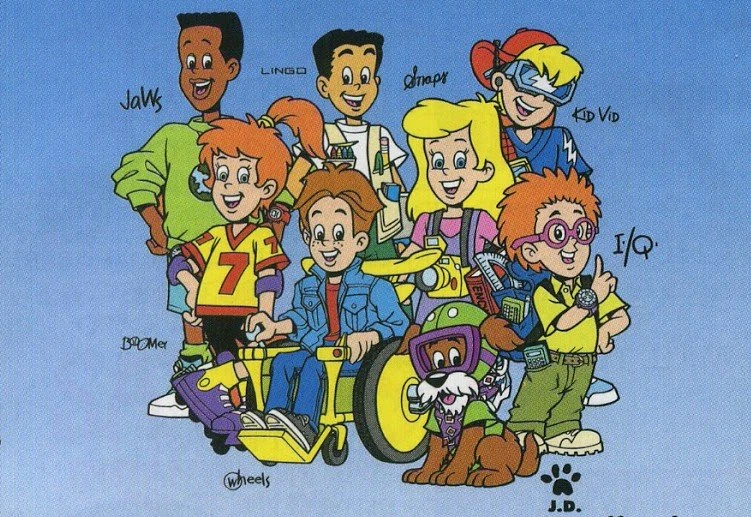
The Burger King Kids Club was a clear example of segmentation, targeting, and positioning (STP) in marketing, as Burger King used these characters to appeal to a broader range of young consumers, each with varying tastes and preferences.
At the time, the group was seen as inclusive and positive, however – more-recent criticisms have included:
- Perceived Stereotyping: Some critics argued that the Kids Club characters, despite their diversity, reinforced certain stereotypes. For instance, the character “I.Q.” was depicted as a bespectacled, bookish individual, which some viewed as a clichéd representation of intelligence.
- Colourblind Approach: Discussions emerged suggesting that the portrayal of a harmonious, diverse group without addressing real-world racial issues amounted to ‘colourblind racism.’

- Advertising Content: In one particular advertisement, a child is shown struggling with a cello lesson, only to have the instrument magically transformed into an electric guitar by a Kids Club member, implying that classical music is less appealing.
Despite these controversies, the Burger King Kids Club remained a prominent part of the company’s marketing strategy throughout the 1990s, aiming to create an inclusive environment for children.

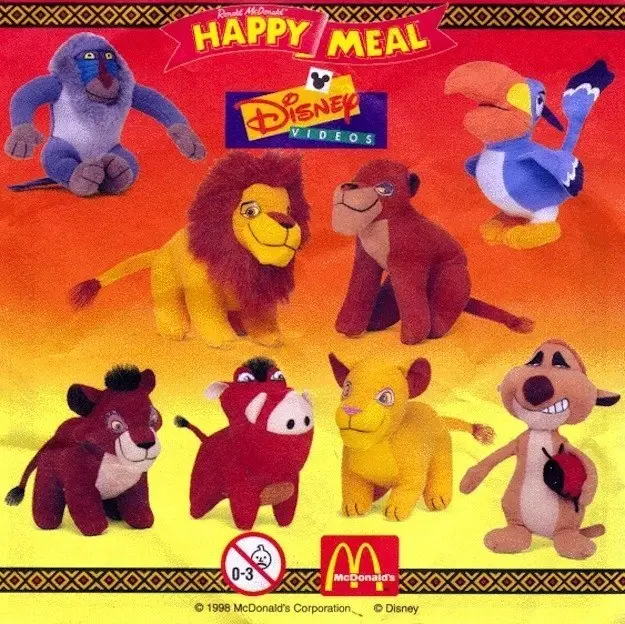
Marketing to Children
In recent years, marketing fast food to children has come under increased scrutiny, leading to stricter regulations, particularly in the UK. The UK government has implemented advertising restrictions on unhealthy food products aimed at children, limiting the ability of brands like McDonald’s and Burger King to directly market their meals to younger audiences.
These restrictions, including bans on junk food advertising during children’s TV programming and digital campaigns, have forced fast-food giants to shift their marketing focus towards family-oriented and health-conscious messaging.
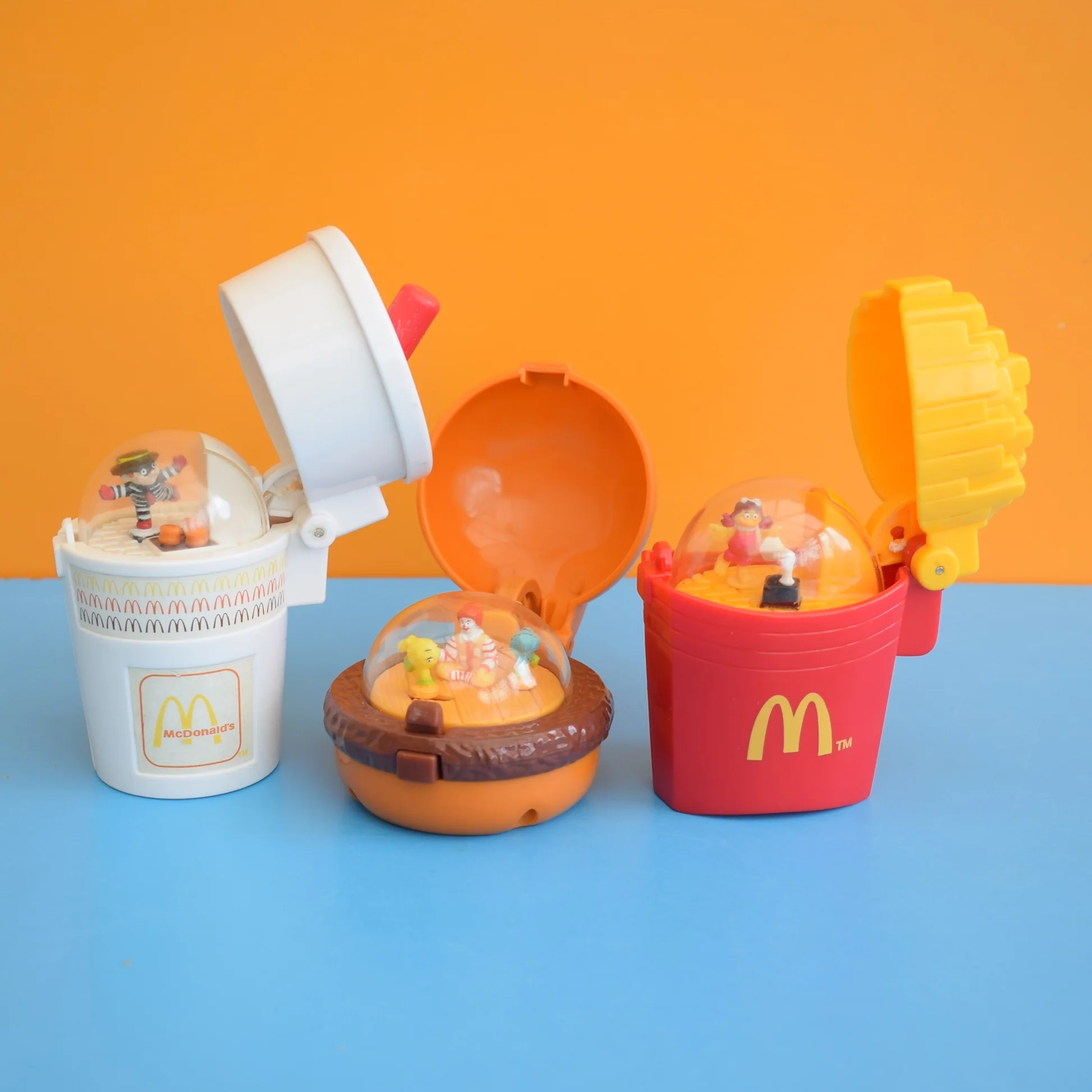
In the 1990s, McDonald’s Happy Meal plastic toys were widely regarded as delightful treasures for children, often becoming cherished collectibles. However, from a contemporary perspective, these toys are scrutinised for their environmental impact and potential health concerns.
Modern environmental awareness highlights the detrimental effects of single-use plastics, including those used in past Happy Meal toys. These items, produced in massive quantities, often ended up in landfills, contributing to long-term plastic pollution. Recognising this, McDonald’s announced in 2021 plans to significantly reduce the use of fossil fuel-based plastics in their Happy Meal toys by 90%, transitioning to more sustainable materials by 2025.
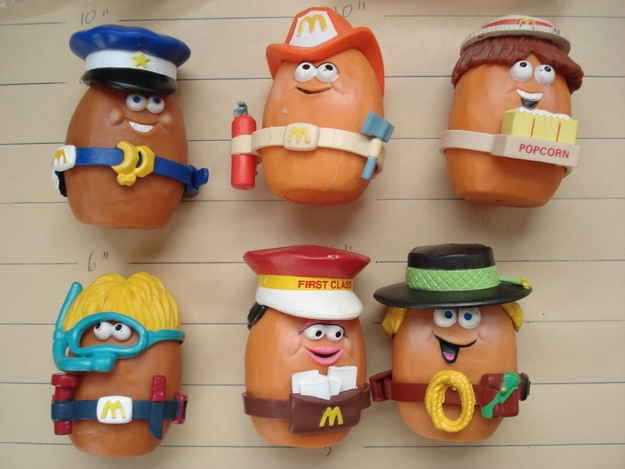
Despite these concerns, many individuals retain a nostalgic affection for 1990s Happy Meal toys. Some of these items have become valuable collectibles, with certain toys fetching significant sums in secondary markets. For instance, complete sets of specific collections have been known to sell for hundreds of dollars.
Getting back to the buyer wars – the 1990’s was also marked by a notable shift in advertising tones, with Burger King favouring humour and irreverence in its messaging, while McDonald’s maintained a more traditional and wholesome brand image. This approach aligns with Aaker’s (1991) brand equity theory, where competitive marketing efforts contributed to brand strength by reinforcing consumer perceptions and deepening brand loyalty through constant engagement and innovation. These tactics ensured that both brands remained at the forefront of consumer consciousness, fueling their ongoing battle for market share.
-
1993: Burger King introduced the Big King, a near-exact replica of McDonald’s Big Mac, sparking yet another wave of competition.
-
1997: Burger King doubled down, launching ads that openly mocked McDonald’s burgers, particularly comparing the Big King to the Big Mac, claiming “It’s like a Big Mac, but better.”
-
McDonald’s Hits Back: In response, McDonald’s promoted its own fresh ingredients and cooking methods, indirectly calling out Burger King’s flame-grilling process.
-
Children’s Marketing War: Both companies aggressively targeted kids, with McDonald’s pushing Happy Meal toys and Burger King offering partnerships with major brands like Disney.
2000s–2020s: Digital Marketing and Public Stunts
As the world moved into digital marketing, both companies leveraged social media and viral campaigns to continue their rivalry. Burger King, in particular, became known for its unconventional and edgy marketing, often using humour and bold tactics to engage younger audiences. Campaigns like “Burn That Ad,” where customers could digitally ‘burn’ a McDonald’s ad to get a free Whopper, demonstrated their innovative approach. Another notable example was the “Whopper Neutrality” campaign, which cleverly compared net neutrality regulations to how customers might be charged different prices for Whoppers based on internet speed.
McDonald’s, on the other hand, maintained a more traditional brand presence, focusing on reliability, nostalgia, and accessibility, which reinforced its position as the dominant fast-food chain. The “Famous Orders” campaign, featuring celebrity-endorsed meals from stars like Travis Scott and BTS, was a massive success, blending influencer marketing with cultural relevance.
The use of mobile ordering apps and loyalty programs also played a crucial role in each brand’s digital marketing strategy. Burger King’s “Whopper Detour” campaign, where customers were encouraged to order a Whopper while physically near a McDonald’s location, demonstrated their ability to use geolocation and app-based marketing innovatively. Meanwhile, McDonald’s doubled down on its McCafé rewards program and mobile-exclusive deals to drive app downloads and customer retention.
Kotler and Keller’s (2012) concepts of brand resonance and digital engagement highlight how these strategies built strong consumer connections, with McDonald’s leveraging familiarity and trust while Burger King capitalised on interactivity and digital engagement to drive customer loyalty. Both brands have demonstrated how digital innovation can enhance customer experiences while reinforcing their unique brand personalities.
-
2017: Burger King trolled McDonald’s with a campaign in which it placed billboards near McDonald’s locations with arrows saying, “Whopper, this way – 5 miles ahead,” highlighting the contrast in restaurant locations.
-
2018: The “Whopper Detour” campaign was launched, offering customers a Whopper for one cent if they ordered while near a McDonald’s restaurant. The campaign was a massive success, generating millions of app downloads.
-
2019: Burger King introduced the “Moldy Whopper” campaign, showing their burger naturally decomposing to highlight its lack of artificial preservatives—a veiled criticism of McDonald’s food quality.
-
McDonald’s Response: McDonald’s continued to focus on sustainability, promoting its use of fresh beef in Quarter Pounders and pushing its McCafé brand to compete with Starbucks.

Google Trends: Interest in McDonalds and Burger King Over Time:
Brand Personalities: McDonald’s vs. Burger King
While both McDonald’s and Burger King operate in the same industry, their brand personalities are distinct, influencing their marketing strategies and customer engagement.
-
McDonald’s Personality:
-
Family-Oriented and Friendly: McDonald’s has cultivated a warm, family-friendly image, largely due to its focus on children’s marketing, including the Happy Meal and Ronald McDonald.
-
Reliable and Consistent: The brand prides itself on offering consistent products worldwide, reinforcing trust and dependability in customers’ minds.
-
Mass Appeal and Inclusive: McDonald’s caters to a broad demographic, positioning itself as an accessible and convenient fast-food option for all consumers.
-
Traditional and Nostalgic: McDonald’s often leans into nostalgia, reinforcing its brand legacy and familiarity through consistent branding and classic menu items.
-
-
Burger King’s Personality:
-
Bold and Rebellious: Burger King has adopted an edgier and more provocative tone in its advertising, often positioning itself as the challenger brand against McDonald’s.
-
Customisable and Individualistic: The “Have It Your Way” campaign set the foundation for a more personalised and flexible customer experience, appealing to those who value control over their meal choices.
-
Humorous and Playful: Many of Burger King’s marketing campaigns embrace humour and satire, frequently poking fun at McDonald’s in a lighthearted manner.
-
Innovative and Experimental: Unlike McDonald’s more traditional approach, Burger King often experiments with new digital marketing tactics, viral campaigns, and unique limited-time menu items.
-
These brand personalities influence consumer perception and dictate how each company communicates with its audience, ensuring they remain distinct despite offering similar core products. Personally, I would argue that on face value, the personalities should almost be reversed; typically clowns are associated with humour and playfulness, and Kings are associated with tradition and widespread appeal – but that’s not how the brands evolved.
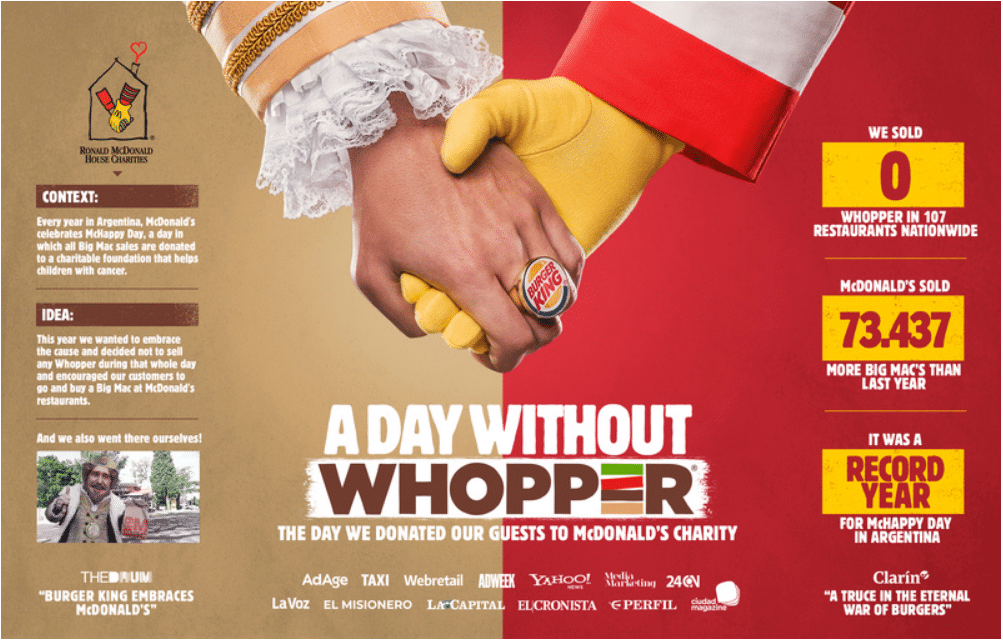
Target Segments: Burger King vs. McDonald’s
Both Burger King and McDonald’s have adopted distinct targeting strategies to appeal to different customer segments.
-
McDonald’s Target Segments:
-
Families and Children: McDonald’s has consistently positioned itself as a family-friendly brand through Happy Meals, PlayPlaces, and tie-ins with children’s entertainment.
-
Budget-Conscious Consumers: With the Dollar Menu and value meal options, McDonald’s appeals to those looking for affordable fast food.
-
Health-Conscious Consumers: In recent years, McDonald’s has expanded its menu to include salads, fruit, and lower-calorie options to cater to a more health-conscious audience.
-
Urban Professionals: The McCafé brand competes with Starbucks, attracting working professionals seeking quick, high-quality coffee and snacks.
-
-
Burger King’s Target Segments:
-
Young Adults and Millennials: Burger King’s bold and edgy marketing, including viral campaigns, appeals to a younger demographic that enjoys humour and rebellious branding.
-
Burger Enthusiasts: By emphasising flame-grilled burgers and promoting customisation (e.g., “Have It Your Way”), Burger King targets customers who value taste and personalisation.
-
Tech-Savvy Consumers: With innovative app-based promotions like the “Whopper Detour,” Burger King has focused on attracting digital-first consumers.
-
Value Seekers: Similar to McDonald’s, Burger King offers competitive pricing through promotions like 2-for-1 Whopper deals and value meals.
-
By focusing on these segments, both brands have been able to carve out their own loyal customer bases while continuing their competitive rivalry.
Conclusion: A Rivalry That Fuels Innovation
The McDonald’s vs. Burger King battle has shaped not only the fast-food industry but also the broader marketing landscape. Their rivalry demonstrates the power of competitive positioning, innovative marketing strategies, and consumer engagement in shaping brand loyalty. Their ongoing competition ensures that both companies will continue pushing the boundaries of advertising and customer experience for years to come.


